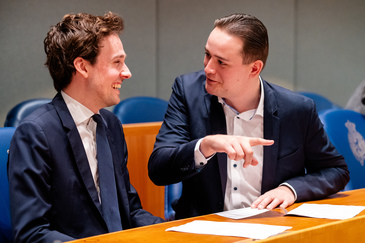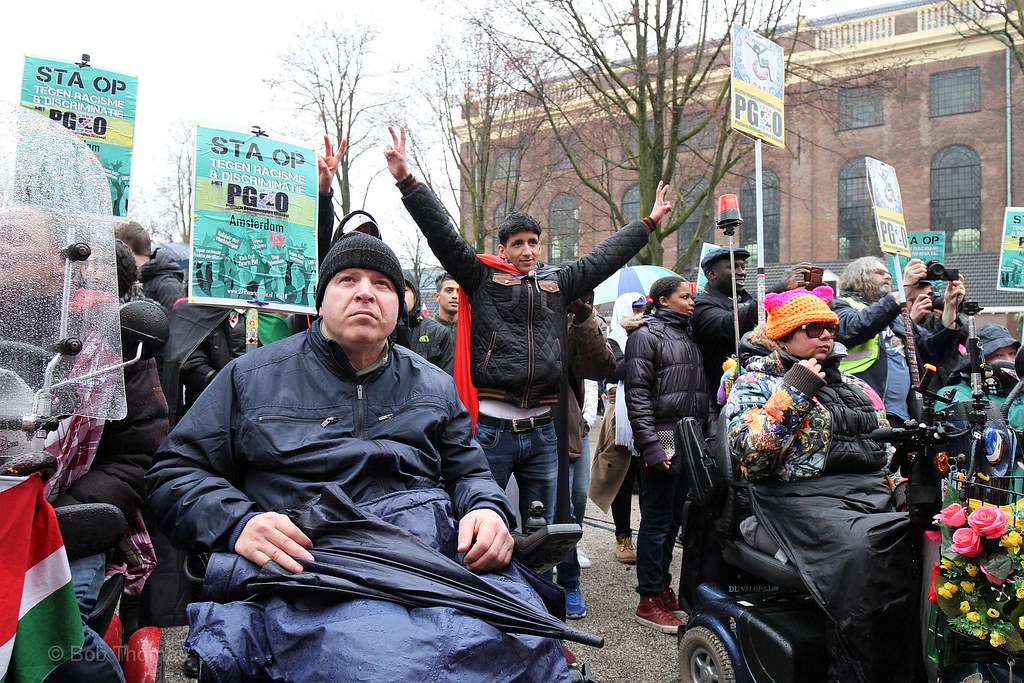Protests in Amsterdam in October 2022 in solidarity with Iranian protesters
In recent months, Iranians have taken to the streets en masse to demonstrate for greater freedom. The protest movement is in dire straits. Partly due to harsh government repression and economic woes, the protests seem to have passed their peak.
"Women, life, freedom"
The immediate cause of the protests was the death of 22-year-old Masha Amini in September. Prior to her death, Amini had been arrested by the so-called vice police for not wearing "modest clothing". During Amini's funeral on 16 September, protesters gathered in her hometown of Saqqez in Kurdistan province.
Since then, protests have spread to almost all of Iran's 31 provinces. Women as well as men took to the streets en masse to demand justice for Amini and demonstrate against the strict dress code for Iranian women. The economic malaise is also contributing to discontent among the Iranian people. One of the central slogans chanted by the protesters is "women, life, freedom".
The current protests are the largest since those in 2019-2020, when Iranians took to the streets en masse, initially in protest against rising oil prices. Eventually, these protests grew into a movement calling for democratisation and the overthrow of Ayatollah Ali Khamenei. In contrast, the current demonstrations seem to be at their core about women's rights.
Harsh repression
Whereas large protests were organised daily this autumn, demonstrations are now taking place on a smaller scale. This is partly due to the Iranian regime's harsh repression. Since the protests began, at least 481 protesters have already been killed, including 64 minors, according to human rights organisation Iran Human Rights (IHR). Iranian security forces are firing live rounds at protesters. Moreover, according to human rights organisations, some 20,000 protesters have now been arrested. Arrested protesters are often forced to confess and apologise publicly, on television or social media.
"Warfare against God"
Several protesters have also been sentenced to death. According to IHR, at least 109 protesters are currently at risk of being sentenced to death or executed. Four executions of protesters took place in recent weeks. At least 12 others have been sentenced to death. They are all men. Most of them are accused of "warfare against God," a punishment normally punishable by death in Iran.
Their trials took place behind closed doors. The men were defended by lawyers appointed by the regime. The evidence presented is often questionable. Human rights groups say there is evidence of torture in a number of cases.
"Justice is not achieved by the noose"
Several famous Iranians have decried the death sentences, often putting themselves at risk. Iranian football team striker Mehdi Taremi tweeted that "justice is not achieved by the noose". He also called for an end to executions.
Last Monday, dozens of Iranians demonstrated in front of the prison in the city of Karaj, near Tehran, to stop the execution of two men. Videos show a crowd gathered in front of Rajaei-Shahr prison in an attempt to stop the execution of 22-year-old Mohammad Ghobadlou and 19-year-old Mohammad Boroughani. The demonstrating crowd included the families of the two young men.
Towering inflation
The crisis facing the Iranian economy also plays a role in the apparent weakening of the protest movement. Many people simply cannot afford to take to the streets daily to demonstrate. They have a business to run or work to go to.
The economic malaise is linked to the stringent economic sanctions imposed on the country by the United States. Several sectors of the Iranian economy have been affected by these sanctions since Donald Trump pulled the plug on the nuclear deal with Iran in 2015.
In addition, the economic mismanagement of the Iranian regime itself is a major factor in the deteriorating economy. The relative poverty in which many Iranians live is thus also a major driver of the protests.
Lack of clear leadership
Although protests are becoming scarcer and smaller, they could potentially shape a powerful, united opposition. So far, however, the movement lacks clear leadership. Many demonstrations are organised from the bottom up, taking place relatively spontaneously. This is an important strength of the protest movement, but can also prove to be a weakness if a clear vision of the future is lacking.
The Iranian leadership also remains relatively united. No definitive split has emerged between the conservative hardliners and those willing to make concessions to the protesters' demands. Even the security forces, another crucial factor in the stability of he Iranian leadership, have so far remained loyal to the regime.
Dissatisfaction unresolved
Thus, due to continued repression and economic malaise, the protests seem to have passed their peak. At the same time, the Iranian regime hardly makes any concessions, but instead reinforces dress codes. Recently, the regime emphasised that the headscarf must also be worn in the car. This does not resolve the root causes for the wave of protests. It is therefore likely that discontent with the Iranian regime will continue to raise its head, in the form of protests or through other avenues.
Sources: Human Rights Watch, Iran International, Al Jazeera 1, Al Jazeera 2, Al Jazeera 3, Al Jazeera 4, Al Jazeera 5, The New York Times, NOS
Image: Wikimedia Commons





